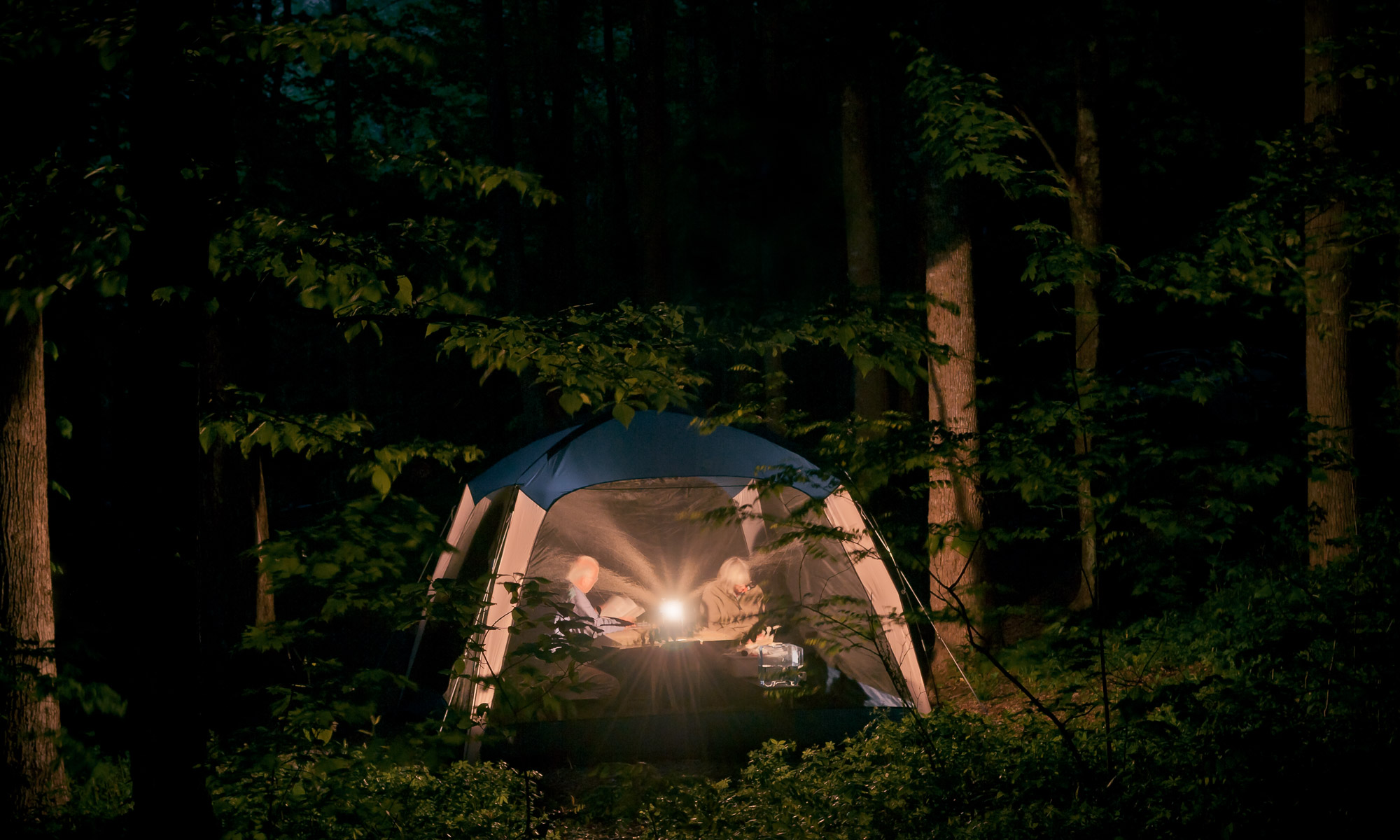Chiaroscuro in the Forest

Long before my introduction to the concept of chiaroscuro — long before my interest in photography and art — I was attracted to pools of light in the darkness.
On summer nights as a child, my friends and I turned on the hazard lights of tractors parked on my dad's farm, and hung out in the amber glow. We dissected strings of Christmas lights, repurposing the bulbs as tiny street lamps for towns we built in the tall grass.
In high school, I became fond of the way a campfire lights the faces of those around it. During college, I became an aficionado of tents, lit by flashlight from within, glowing like luminarias in the wilderness.
As present-day homeowners, my wife and I spend considerable time fiddling with the lighting in our house. Dinner is often lit by a single dimmed bulb hanging over the table. Such a detail may sound trivial, but many days, dinner is our time together, our chance to reconnect, and a pleasant environment encourages us to linger together.
A Universal Appeal
There's just something very appealing about a pool of light in the darkness. Its attraction is widely, if not universally, appreciated.
In the classic book “A Pattern Language: Towns, Buildings, Construction”, architect Christopher Alexander enumerates his patterns — his rules of thumb — for building humane living spaces that nourish the human spirit. In pattern number 252, “Pools of Light”, Alexander observes that “Uniform illumination … destroys the social nature of space, and makes people feel disoriented and unbounded.” His recommendation:
“Place the lights low, and apart, to form individual pools of light which encompass chairs and tables like bubbles to reinforce the social character of the spaces which they form. Remember that you can't have pools of light without the darker places in between.”
In Paintings and Photographs
When a work of art depicts pool of lights, they evoke the same emotions in us as they do in the real world. There are artists such as Thomas Kinkade who've built entire careers around this response.
A painting or photo like the one above is said to have chiaroscuro: high-contrast lighting that emphasizes the subject against a dark background [1]. Chiaroscuro acts as an amplifier of emotion, increasing the depth of our reaction to a piece of art. It taps into those strong feelings about light that seem hardwired into us.
If this photo of a reading couple had been taken on an overcast day, when the lighting was more uniform, it might still be a pleasant scene, but I seriously doubt it would have the same emotional impact.
Notes
[1] To be complete, I should point out that chiaroscuro has a second definition: that of using shading in a painting or drawing to give the illusion of 3-dimensional depth.